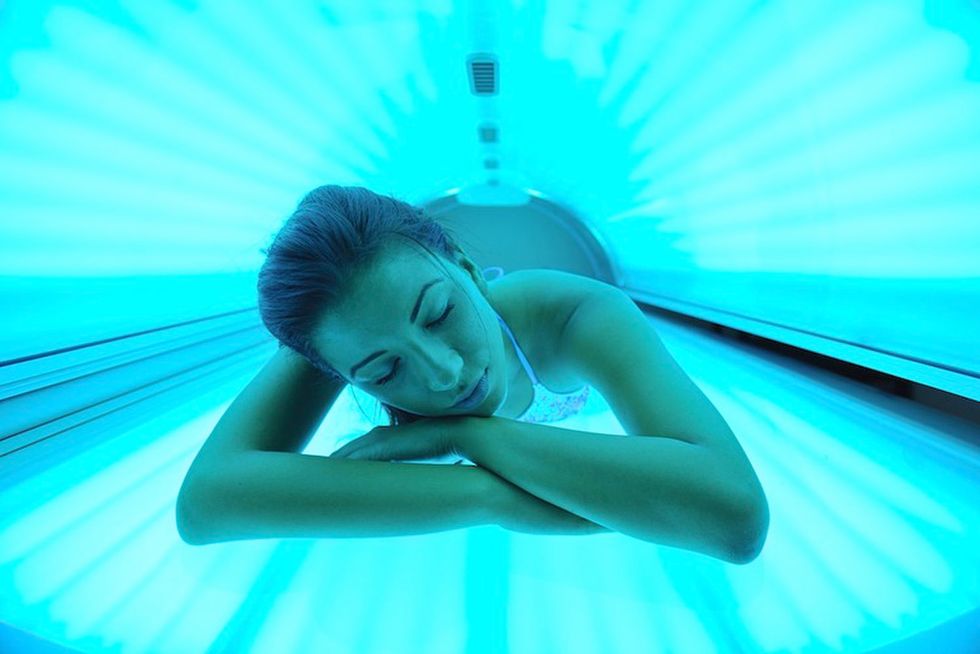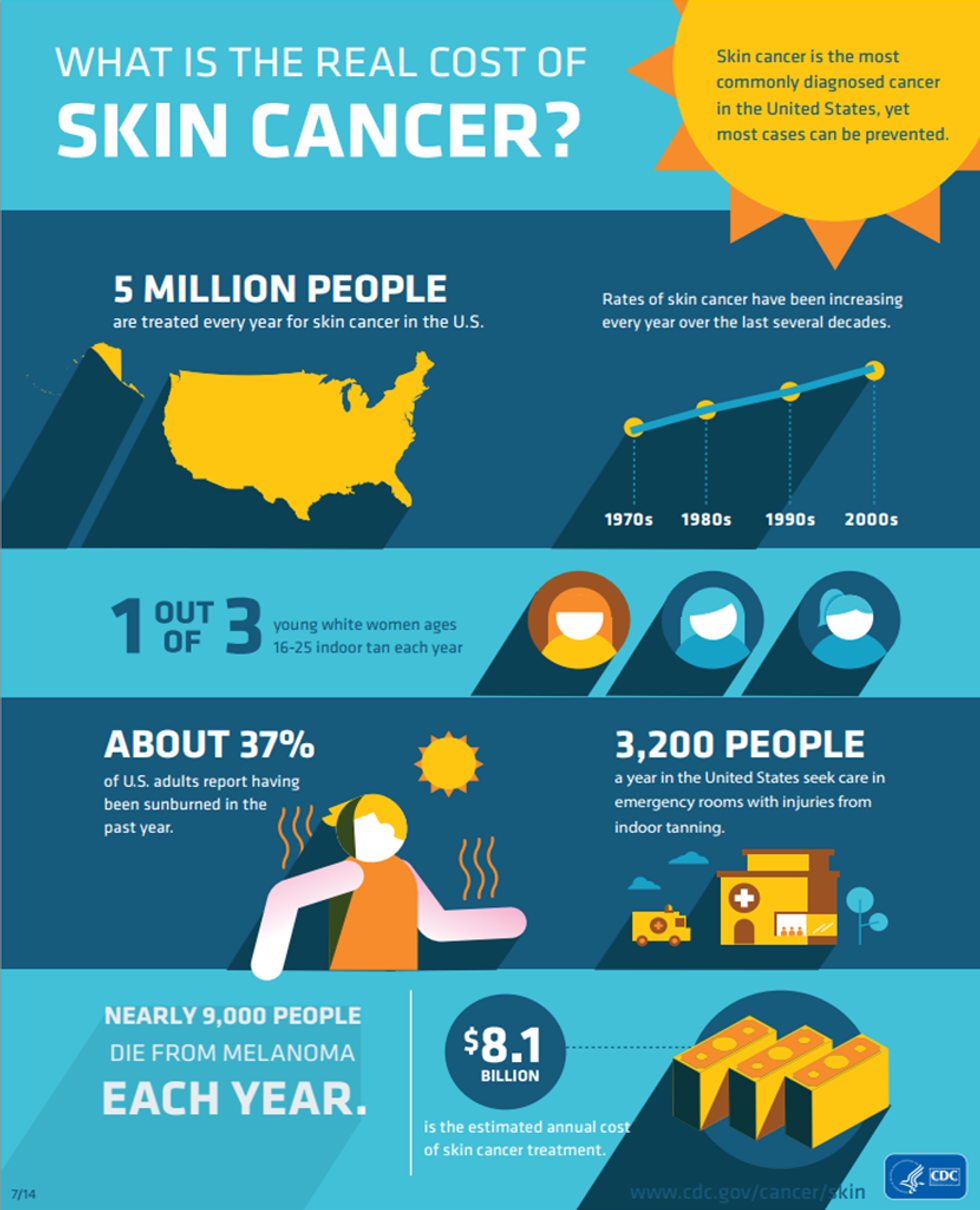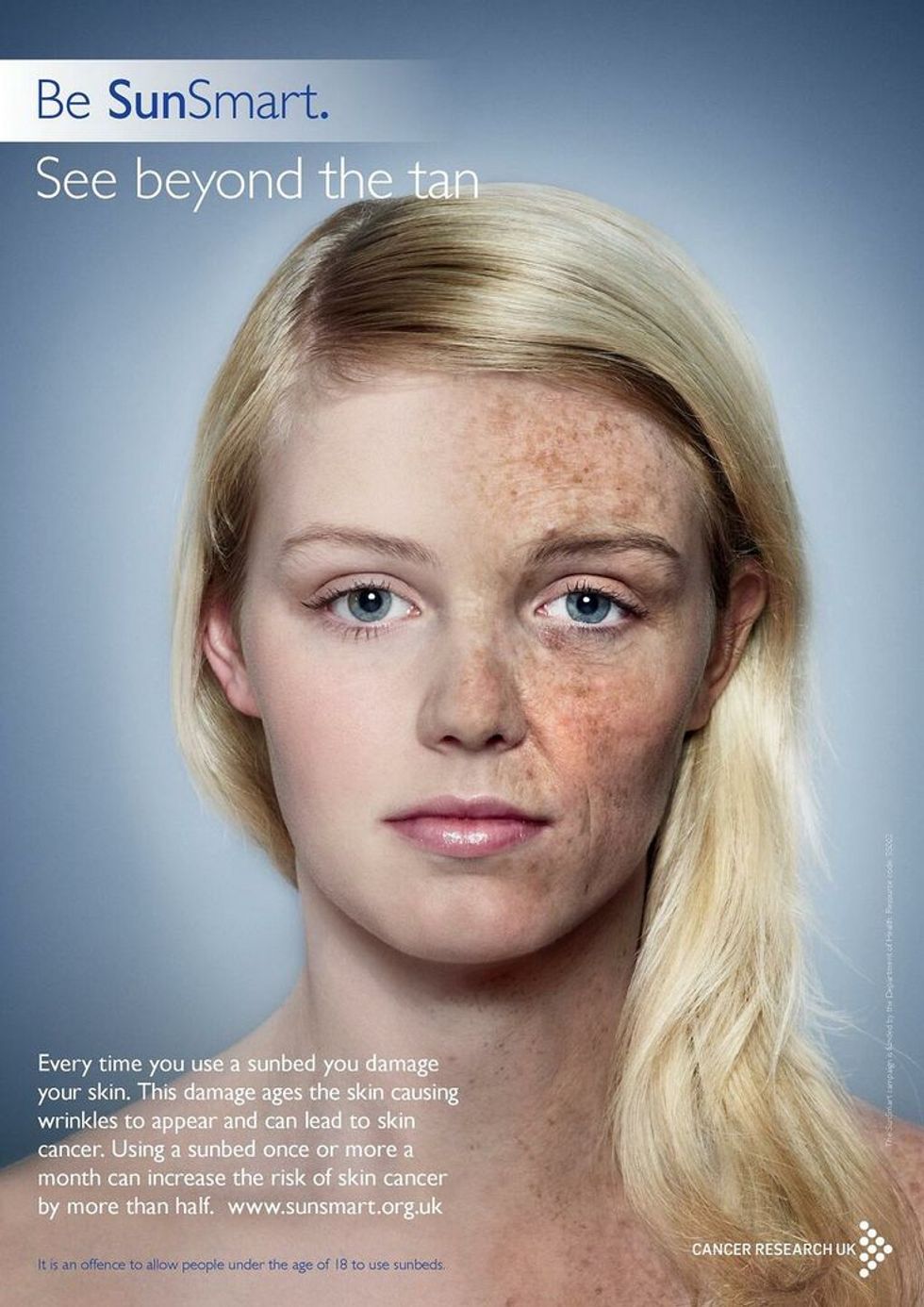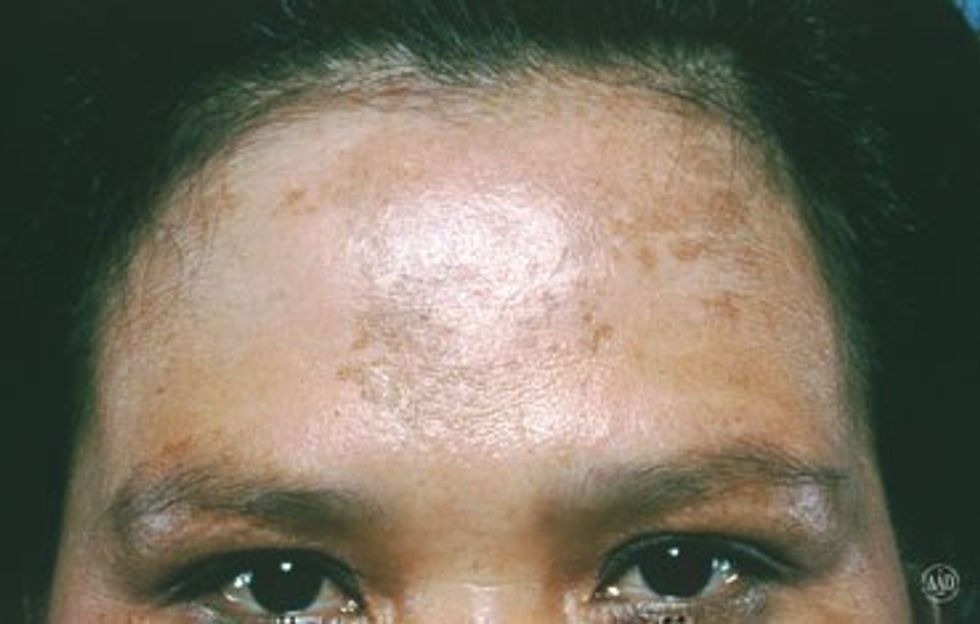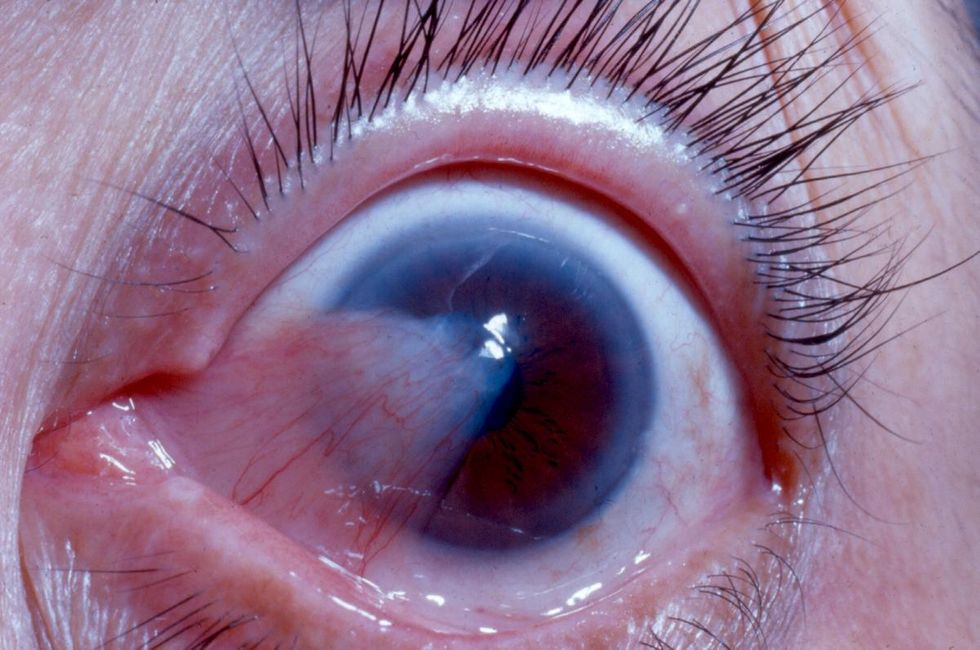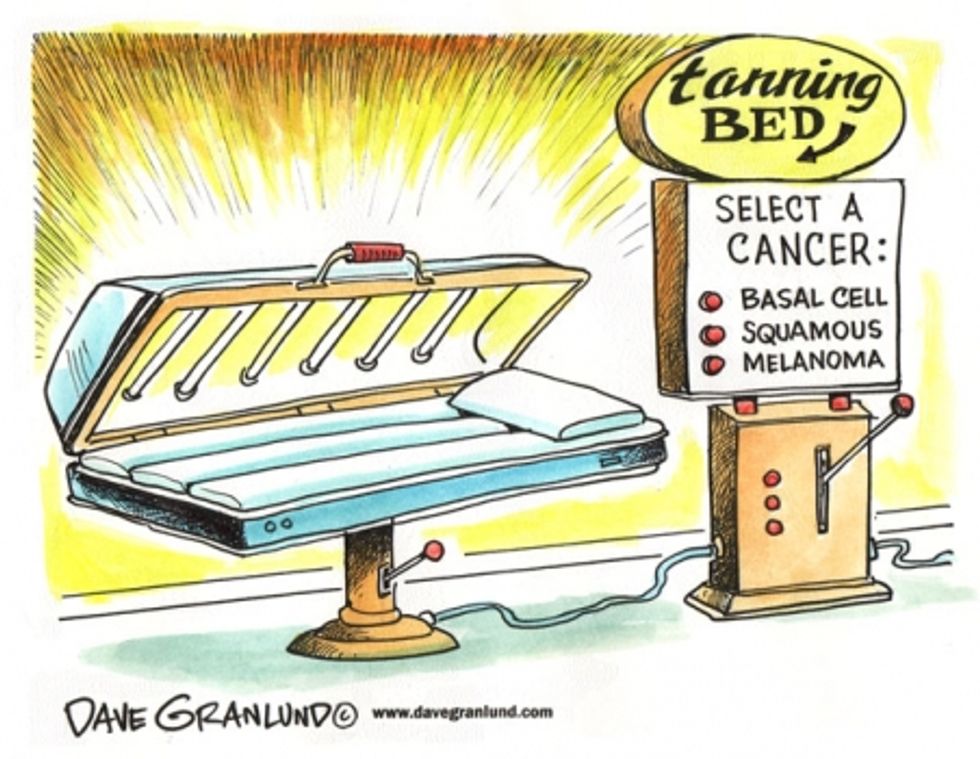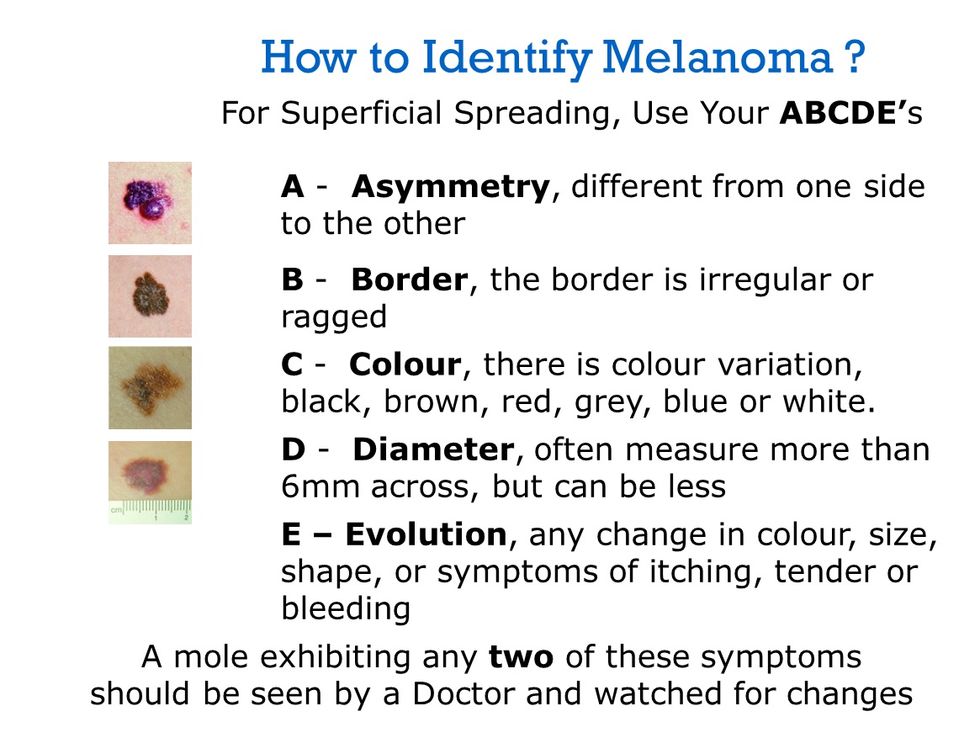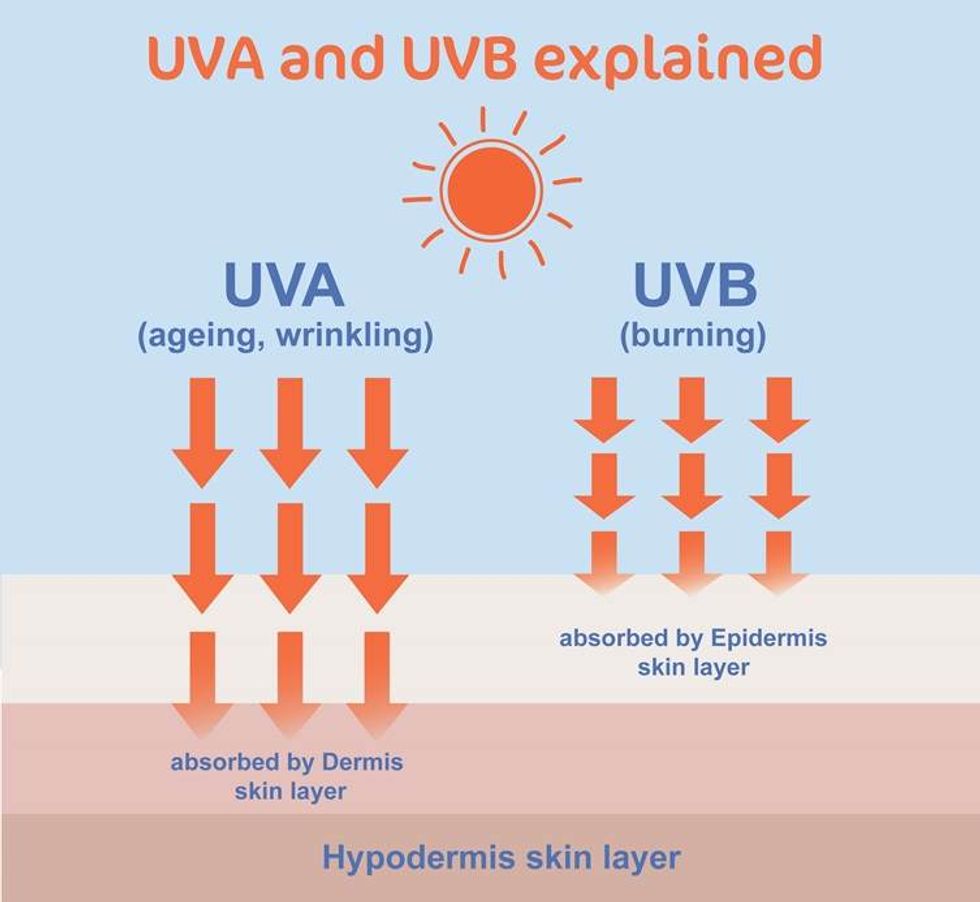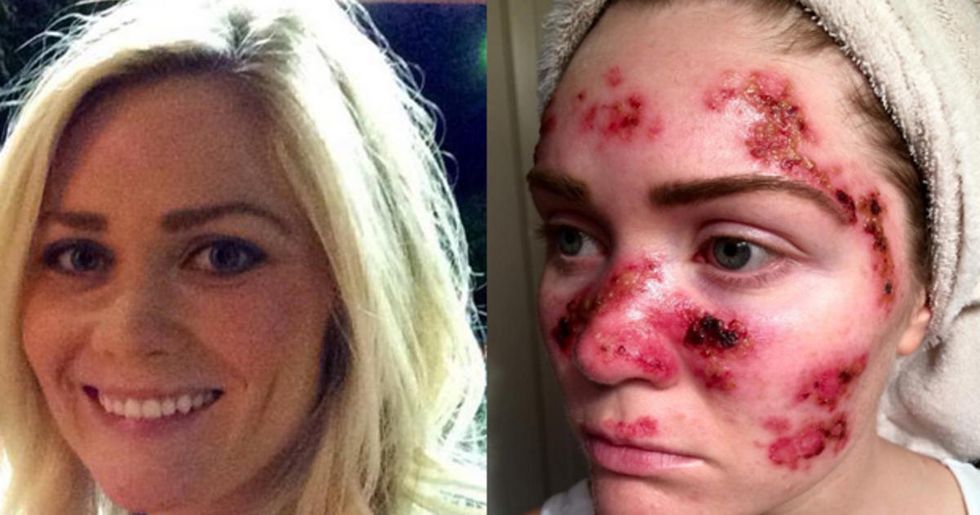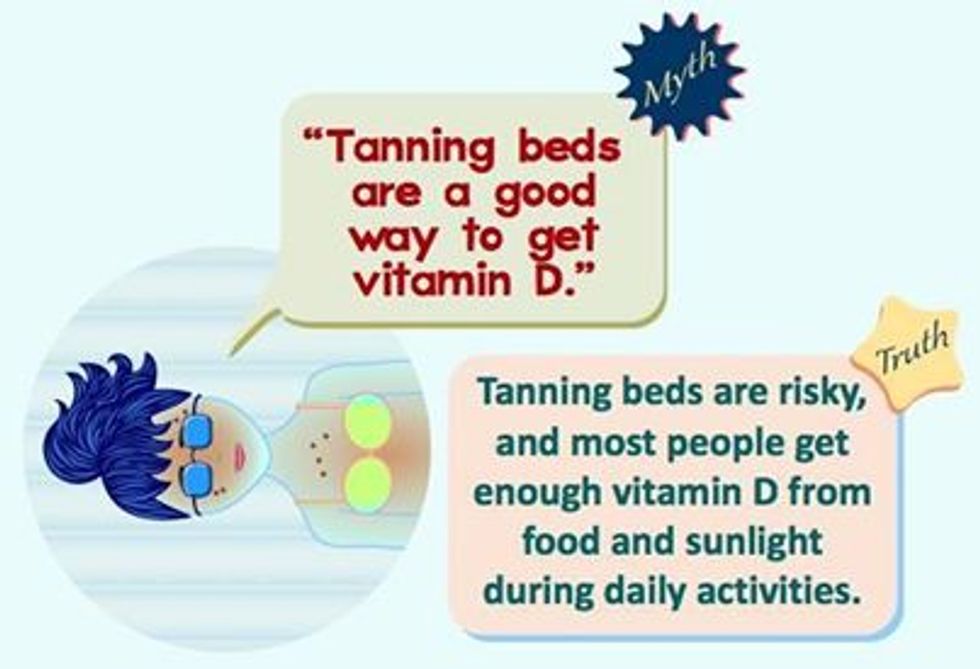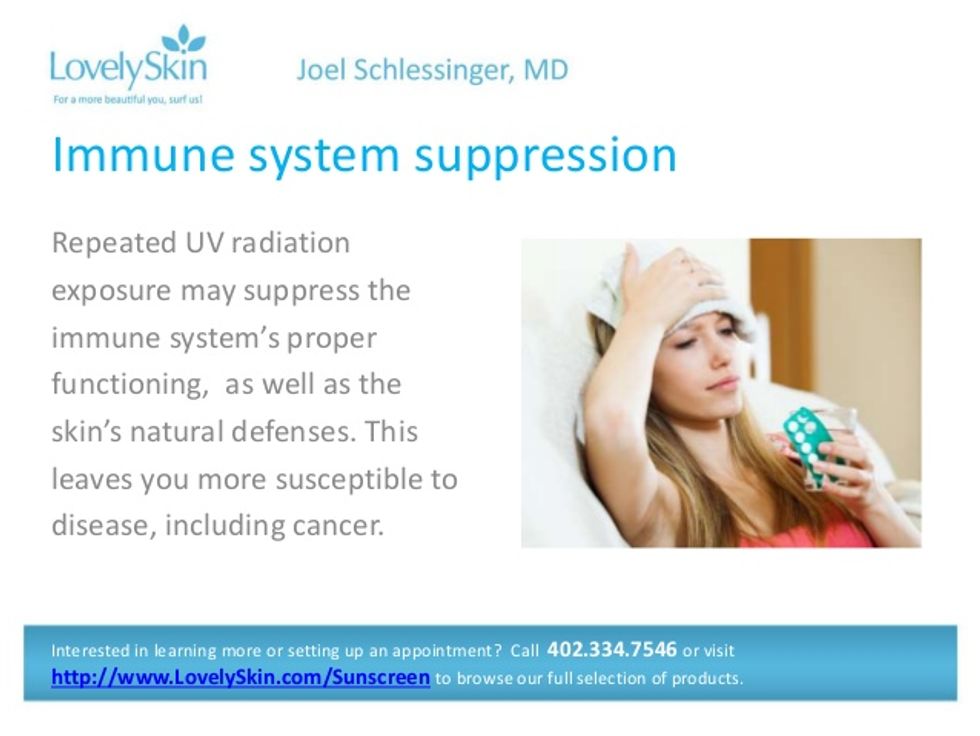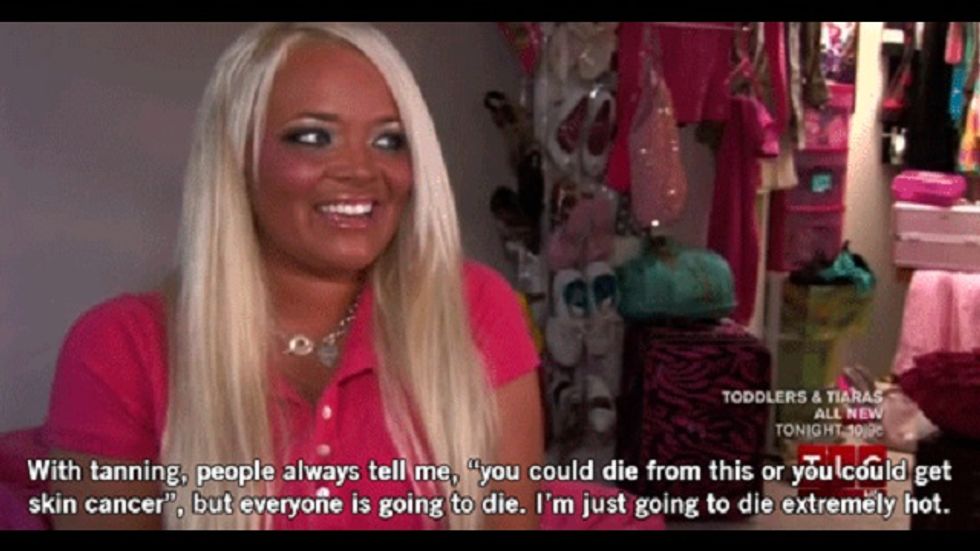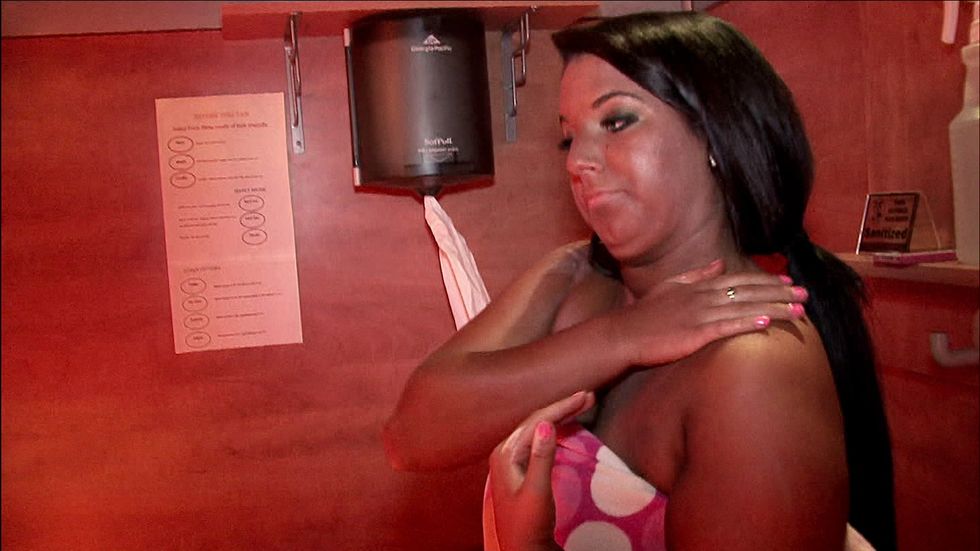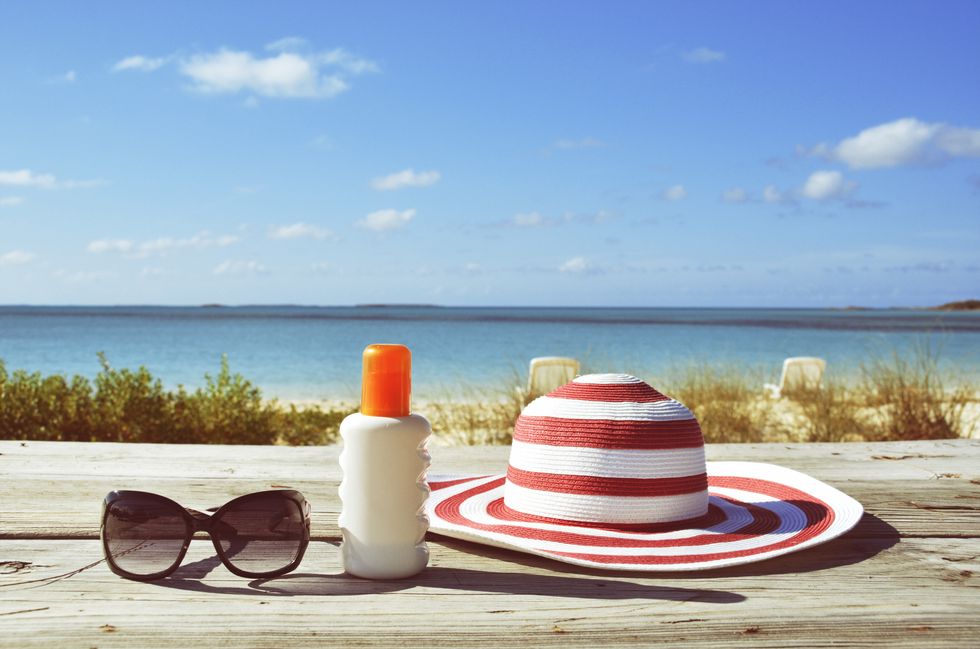I know what it’s like. Being so pale in the winter time that you need to buy new foundation or use orange-y looking lotions to substitute for sun-kissed skin. For most, being pale is not something one strives for. It makes acne show, pores look bigger, skin just doesn’t glow, I get it. It’s a common practice for people to use tanning beds to obtain a richer skin tone in the winter, and even more routine for them to keep it up. Unfortunately, I’m about to shut that down for you right now for good reason.
Skin cancer is the most commonly diagnosed cancer in the US. It can be disfiguring, deadly, and it greatly affects quality of life. In addition to that, it’s preventable, and the US spends $8.1 billion dollars on skin cancer every year (with $5 million diagnoses annually). That’s almost 1 dollar for every person that exists in the world.
1. It’s so bad that the Surgeon General is getting involved.
Sun cancer has become a MAJOR public health problem and is requiring a "Call the Action". This means that associates from across the nation are going to begin advocating this as a major issue and getting involved in methods to decrease the risk. In fact, according the surgeongeneral.gov, the number of Americans who have had skin cancer at some point in the last three decades is estimated to be higher than the number for all other cancers combined.
2. Every time you tan, it changes your skin texture and causes premature aging, wrinkles, and age spots.
Read about that here.
While this is something you hear all the time from Grandma Sue, it is not a lie. If you are taking birth control pills, you can develop something called melasma. This is patchy brown, tan, or blue-gray facial skin discoloration that appear on the upper cheeks, upper lips, forehead, and chin of women ages 20-50.
3. It increases the risks of potentially blinding eye diseases.
Read more about that here. This is no joke. Here is an article about a 23 year old girl who didn’t wear goggles and has now developed masses of tissue in both of her eyes. She requires surgery in order to correct this. Besides this frightening story, tanning beds can cause cataracts and other cancers of the eye.
4. Here’s a good one: The World Health Organization has determined that UV rays from tanning beds cause cancer.
This is for real y'all. This isn’t a group of doctors, this isn’t Grandma Sue, and this isn’t JUST the Surgeon General. An entire organization that oversees the health and quality of life of the WORLD determined this outcome. Need I say more?
5. Melanoma kills somebody every 50 minutes.
My classes are 1.25 hours. While sitting in class, 1.5 people die because of Melanoma. This chart can be used to identify melanoma and know which new moles are risky when they appear.
6. Just to throw in a fact: tanning beds are 15 times more risky than sun exposure when it comes to tanning.
Why? Because tanning beds emit 15 times more UV radiation than the sun. They emit UVA rays, which damage the cells enough for Melanoma to start growing, and UVB rays which increase your chances of Melanoma and other skin cancers.
7. This is a tough one to swallow. Skin cancer among tanning booth users is more frequent than lung cancer to smokers.
I bet you never thought that entering the tanning booth was the equivalent to smoking a pack of cigarettes. According to skincancer.org, 419,254 cases of skin cancer are attributed to indoor tanning. According to lung.org, Approximately 419,254 Americans living today have ever been diagnosed with lung cancer. There are roughly 20,000 more people walking around with cancer related to indoor tanning than smokers from lung cancer. Now it’s becoming clear why the Surgeon General is getting involved.
8. If somebody is telling you that you need to use tanning booths for Vitamin D, they need to stop right now.
UVB radiation is what causes the skin to produce Vitamin D, but most tanning booths only emit UVA radiation. You can also obtain Vitamin D from many different types of foods, a daily multivitamin, and being outdoors for 10-15 minutes periodically. There are multiple sources that state this.
Source 1 | Source 2 | Source 3 | Source 4 | Source 5
9. Indoor tanning can cause immunity suppression.
That means that the UVB rays from the tanning booth interfere with the proper functioning of the body’s immune system by lowering the skin’s natural defenses and in turn can make you more vulnerable to diseases. This is one of the reasons that cancer is so prevalent among devoted tanners.
10. This last statement may be the most dangerous thing about indoor tanning. It is addictive.
UV radiation from tanning beds release endorphins and other feel-good chemicals. For some, this could cause a dependency that is tough to break. Even skin cancer survivors still practice unsafe methods when it comes to exposing the skin to harmful rays. Don’t believe me? Here’s a CBS news story from 2013 discussing it.
This photo comes from an episode of True Life called True Life: I'm Addicted to Tanning.
Listen to me: chase your friends and family out of tanning booths. This has become a major health issue that is being recognized as destructive physically and psychologically. Laying out in the sun in moderation is all good fun, but these tanning booths have nothing but negative things to offer. To conclude this article on a helpful note, I have included a list of ways to be protected from over exposure of UV radiation from the Occupational Safety and Health Administration's website.
- Cover up. Wear tightly-woven clothing that blocks out light. Try this test: Place your hand between a single layer of the clothing and a light source. If you can see your hand through the fabric, the garment offers little protection.
- Use sunscreen. A sun protection factor (SPF) of at least 15 blocks 93 percent of UV rays. You want to block both UVA and UVB rays to guard against skin cancer. Be sure to follow application directions on the bottle.
- Wear a hat. A wide brim hat (not a baseball cap) is ideal because it protects the neck, ears, eyes, forehead, nose, and scalp.
- Wear UV-absorbent shades. Sunglasses don't have to be expensive, but they should block 99 to 100 percent of UVA and UVB radiation.
- Limit exposure. UV rays are most intense between 10 a.m. and 4 p.m. If you're unsure about the sun's intensity, take the shadow test: If your shadow is shorter than you, the sun's rays are the day's strongest.

